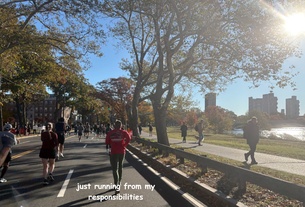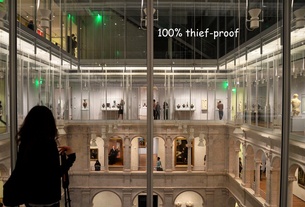{shortcode-600393ffaa2a3785761d3c28e6bcda2a91cb670b}
As Harvard College prepares to permit gender-neutral housing, it is hard to fathom that just 50 years ago the College maintained “an open door and one foot on the floor” policy, formalized in 1952, that not only prohibited the women of Radcliffe College to visit Harvard men’s rooms during certain hours, but also dictated the specific nature of visits.
A little over a decade after the creation of parietal rules—defined at the time in the Radcliffe Redbook as ”the Harvard-Radcliffe term used for those hours during which students may entertain students of the opposite sex in their rooms"—deans became frustrated at the alleged misuse of these hours.
In a letter to The Crimson in 1963, Dean of the College John U. Monro ’34 stated that parietals were intended to create “a chance for men and women students to be together, and talk together, and enjoy each other’s company, in a private, quiet place, at no extra cost.” Instead, he wrote, they were being misused for “wild parties or for sexual intercourse.”
Monro’s words disseminated across the national media, as the Associated Press and Boston newspapers covered the story. Sensational headlines and speculation soon followed, primarily highlighted by a piece in the National Enquirer, which published a tabloid that depicted the Harvard social scene as “orgiastic.”
Yet Monro’s stance, intended to uphold the mores of the time period, only ignited further rebellion.
“I still think that was a dumb stance by the dean,” said John A. Purvis ’64. “I think it really was a matter of indifference until the dean said that...We just considered it to be an invasion of privacy.”
Though students saw the ensuing campus uproar as an isolated event, decades later the 1960s would come to be known as a period of sexual revolution that launched not just Harvard, but the nation, into new moral standards.
MORES TO UPHOLD
To some College administrators, the customs of a previous generation were threatened by the behavior of students in the 1960s.
{shortcode-fa409e45ff2f670280352c84ad3f7dd082c77d29}
“People are concerned about the unusual situation in which unmarried men are entertaining young women in what amounts to their bedrooms,” Winthrop House Master David E. Owen said to The Crimson at the time. “This is not an accepted procedure in the US or anywhere in the Western world.”
Many administrators and faculty found reason for concern, if not disciplinary action, with the abuse of the parietal rules.
“It is not appropriate for a Harvard student to entertain a girl in his own room,” said Dean of Students Robert B. Watson ’37 at the time. “It’s our positive duty to deal with fornication just as we do with thievery, lying and cheating, by taking severe disciplinary measures against the offenders.”
For Harvard, the national news coverage that the story generated was a public nightmare as deans did not want the College to appear lax in comparison to prevailing standards.
“I do not want Harvard to play a leading role in relaxing the moral code of college youth,” Watson said. “We cannot have rules more liberal than a standard generally accepted by the American public.”
From a historical perspective, Elizabeth C. Ahern ’12, who wrote her senior thesis on Harvard in the 1960s, said that the scandal was given added attention due to the University’s status as an important national establishment.
"Harvard was seen as a storied institution,” Ahern said. “[Administrators] were charged, whether fairly or unfairly, with upholding the mores of the time."
As criticism mounted, Monro enlisted the help of University Health Services and Carl A. L. Binger ’40, a psychiatry consultant, to conduct a study on the sexual relationships between Harvard and Radcliffe undergraduates.
Dr. Graham R. Biaine, psychiatrist at UHS, contended that “undergraduates are not emotionally equipped to deal with sexual intercourse,” according to a Crimson article from the time.
The research, however, gained little traction among students. According to the article, “‘When you're in love, it's all right’ [was] becoming the new dictum.”
MORES TO BE BROKEN
Students had grown to view parietals as a formality rather than a steadfast rule, and the administration’s concern seemed “antiquated” and “paternalistic,” according to Purvis. Current Dean of Freshmen Thomas A. Dingman ’67 called the system “a little draconian.”
Monro noted at the time that students were pushing back on the College’s oversight. "When we talked to the students we found a prevailing attitude that what went on in the rooms during social hours was none of the College's business," he told reporters.
There was a sense that “the administration doesn’t get it, they’re too old school,” Ahern said, adding that the student’s of a new generation felt, “you’re an adult and you should be treated like an adult.”
For many students, the administration’s response to the alleged misuse of parietals was delusional.
“The College authorities know we don't have girls in our rooms just to hold hands and do intellectual exercises, so they must approve of what we are doing,” one student said to The Crimson at the time.
In a 1963 response to Monro’s letter, Paul S. Cowan ’62 wrote in a letter to The Crimson about the differing student and administrative positions. “The gap between how the Administration thinks undergraduates act and how they really do act is presently too great for sensitive legislation,” he wrote.
At a university that most students saw as a bastion of forward thinking, the deans’ views seemed out of place.
“I guess we always thought of ourselves and the school as being progressive,” Purvis said.
“When Dean Watson made that statement it was a bit of a fish out of water in terms of our thinking of the place.”
TIDE OF CHANGE
After the debate that was sparked in 1963, parietals were soon eliminated, but not in the manner that administrators expected.
The gap between students and the administration that was catalyzed by The Great Harvard Sex Scandal was exacerbated as the '60s progressed. On top of other student protest, in 1969, then College President Nathan M. Pusey ’28 was forcibly removed by students from Mass. Hall as students protested the Vietnam War.
“Being a college dean then was like living in the public square of a small city inhabited by aliens,” Watson, who was also one of nine administrators dragged out of Mass. Hall, said in 1987. “There was no place to take refuge from the maddening crowd.”
To some, though Harvard students’ pushback against the administration’s parietal rules seemed like a singular event that minorly upset the College, in hindsight, it was the beginning of a transformative generational shift.
“We just considered it to be an invasion of privacy,” Purvis said. “But I don’t think we had the perspective that we have now about the ’60s being a decade of change.”
In 1971, a co-residency program was put into place, allowing men and women to live in the same dorms. For administrators today, the changes over the past 50 years have dispelled the fears that Watson, Monro, and other administrators of the time held about changing mores.
"When they went to having co-ed housing...the naysayers were imagining there would be all sorts of bad behavior but it didn't work out that way," Dingman said.
—Staff writer Tyler S. Olkowski can be reached at tyler.olkowski@thecrimson.com. Follow him on Twitter @OlkowskiTyler.


